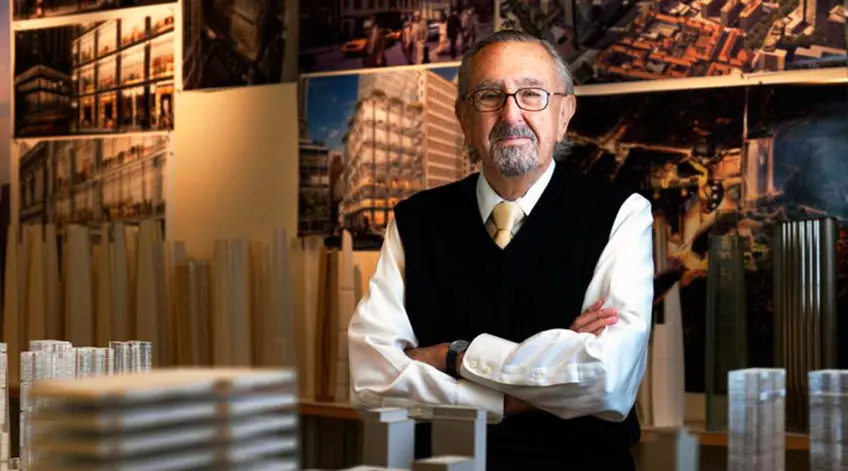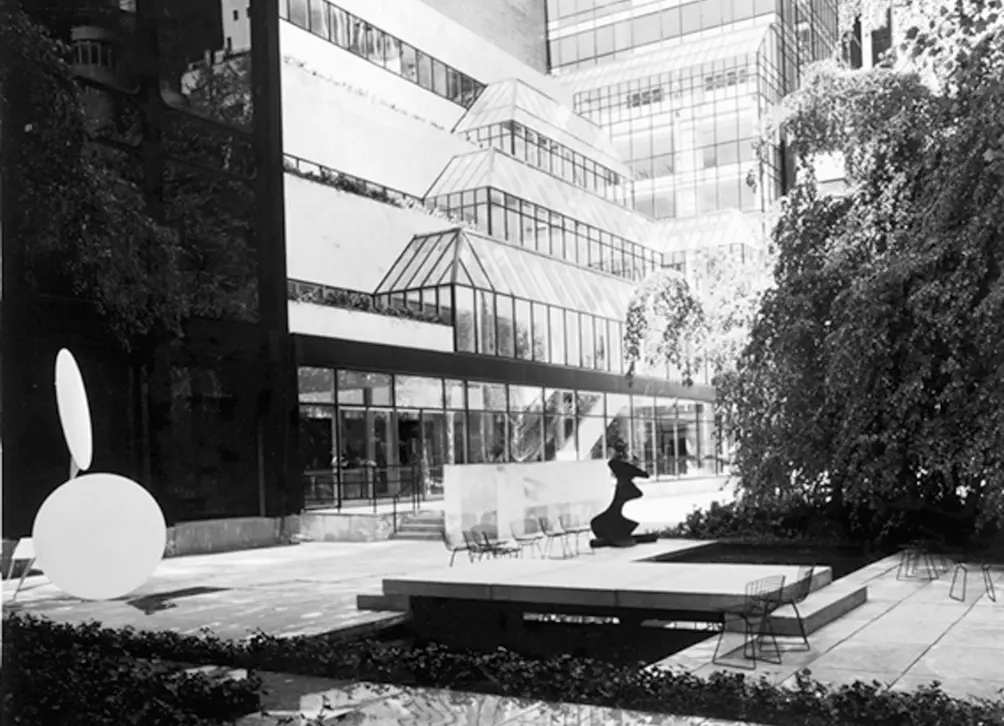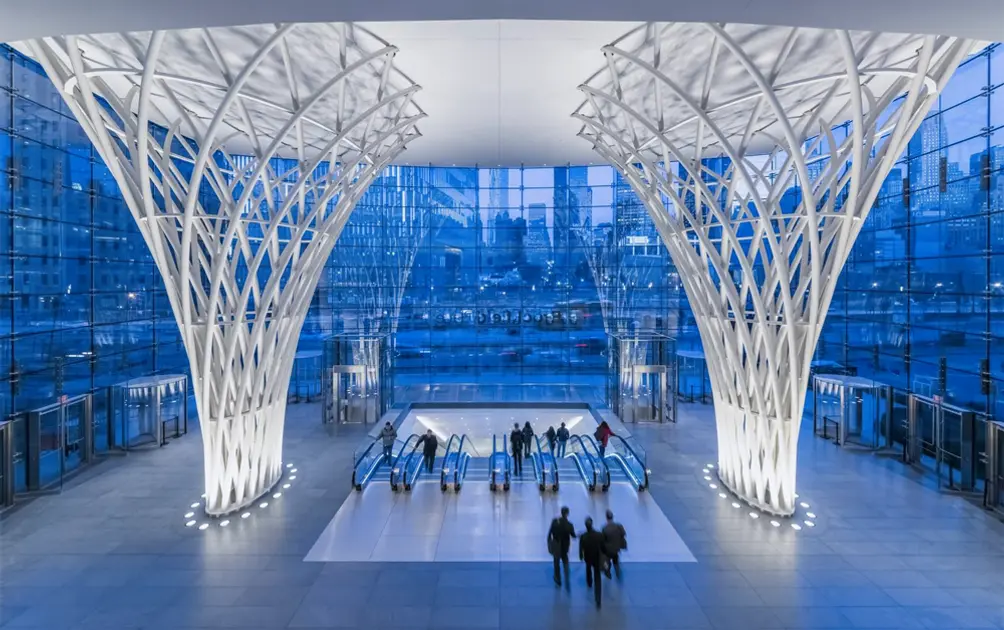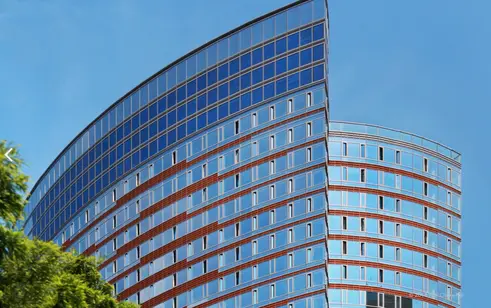 Cesar Pelli
Cesar Pelli
As one of the great modern-day architects of major metropolitan offices, mixed-use buildings, cultural institutions and civic centers, Cesar Pelli couldn't have started out life in more disparate surroundings. Born in the small town of Tucuman in northwest Argentina, just west of the Andes Mountains, Pelli grew up a world away from the densely populated cityscapes that would play such a prominent role in shaping his legacy.
Fresh out of college, Pelli spent his earliest years designing low-cost, affordable housing for the Argentine government. During these formative years, Pelli grew to appreciate and honor each project's unique sense of place - choosing to design the building to fit the neighborhood rather than adhere to a preconceived signature aesthetic, a common practice among top-tier architects.
With projects all over the world, Pelli is heralded for his ability to translate a city's unique history and heritage into an iconic building that complements and enriches the local environment.
 Pelli's addition for MoMA, 1984
Pelli's addition for MoMA, 1984
AMERICAN INFLUENCE
Pelli's big break came after graduating from the University of Illinois' School of Architecture at Urbana- Champaign when he landed a job working for Eero Saarinen, one of the masters of 20th-century architecture, lauded for his neo-futuristic vision. Under Saarinen's tutelage, Pelli served as project designer on assignments such as the TWA Terminal at JFK Airport. A decade later, Pelli went on to work for Daniel, Mann, Johnson & Mendenhall, and then Victor Gruen, both based in Los Angeles.
In 1977, Pelli set out for the East Coast to serve as dean of the prestigious Yale School of Architecture. While there, he opened his own firm, Cesar Pelli & Associates, later renamed Pelli Clarke Pelli. One of his first solo commissions was to design an addition to the Museum of Modern Art in New York. Completed in 1984, the addition consisted of a 52-story residential tower bearing the MOMA name, along with new exhibition space for the museum.
 The Pavilion at Brookfield Place
The Pavilion at Brookfield Place
BATTERY PARK CITY
Of all his New York works, Pelli is perhaps most closely associated with the World Financial Center - Battery Park City's first major installment. Completed between 1986 and 1988, the World Financial Center, now known as Brookfield Place, features five office buildings--each with a different top--flanking a pedestrian plaza and the 10-story, glass-vaulted Winter Garden, which was rebuilt following the Sept. 11, 2001 attacks at the World Trade Center.
Beyond the World Financial Center, Pelli has left another indelible mark on the 92-acre planned community, designing three of Battery Park City's eight environmentally friendly residential buildings: the Solaire, the Verdesian and the Visionaire.
In May 2003, Pelli and the Albanese Organization opened the Solaire, a certified LEED Gold rental tower, the first building to meet Battery Park City's environmental guidelines and the first green residential building in the United States. Within six months of the building's opening, the Solaire was fully occupied and setting new records for rents. On the heels of their success, Pelli and the Albanese Organization unveiled a sequel: the Verdesian, the first residential high-rise structure in the United States to win LEED Platinum certification.
 The Visionaire
The Visionaire
The Visionaire
Another groundbreaking achievement, the Visionaire, at 70 Little West Street, opened in 2008 as the first condo building in New York to achieve LEED Platinum certification. The combination of green features and traditional luxurious amenities such as sky-lit swimming pool, lounge and screening room has helped make the Visionaire a top seller while also driving neighborhood pricing in Battery Park City.
ONE BEACON COURT
The firm's other major addition to the New York skyline is One Beacon Court, a 55-story, mixed-use tower featuring 105 luxury condominiums and 900,000 square feet of office space for Bloomberg LLP. Located at 151 East 58th Street between Lexington and Third avenues, One Beacon Court - also known as the Bloomberg Tower - is one of the city's top trophy properties, attracting celebrities such as Beyonce, NBC Nightly News anchor Brian Williams and baseball star Johnny Damon, as well as an array of business tycoons.
Opened in 2005, One Beacon Court has achieved average prices as high as $4,068 a square foot, nearly triple the Midtown average of $1,455 in 2012. The building has also produced its share of record listings, most notably billionaire Steve Cohen's 9,000-square-foot penthouse, initially listed at $115 million in April 2013, reduced to $98 million in December, and then finally pulled from the market in July.
In addition, One Beacon Court is prime territory for flips with buyers raking in seven-figure profits after only a couple of years. Here, a buyer purchased a 2,410-square-foot apartment, 40E, for $4.25 million in 2005, and later resold the unit for $8.950 million in 2010.
BRIDGING THE PAST & THE FUTURE
Having firmly cemented his legacy as one of his generation's greatest and most ambitious architects, Pelli has turned over operations of the firm's New York office to his son, Rafael, who spearheaded work on One Beacon Court, as well as design of the three LEED-certified residential buildings in Battery Park City, and the post-9/11 reconstruction of the World Financial Center.
During his long and distinguished career, Cesar Pelli has transformed cities at home and abroad - from Kuala Lumpur, Malaysia, where, in 1997, he built the Petronas Towers, once the world's tallest buildings, to the Carnegie Hall Tower, a colorful and slender 60-story, mixed-use building designed in a Post-Modern style in keeping with the overall aesthetic of the area.
Author of nine books, Cesar Pelli is the recipient of a gold medal for distinguished lifetime achievement from the American Institute of Architects. He was also honored with the Aga Khan Award for Architecture for the design of the Petronas Towers in Kuala Lumpur. Author of nine books, Cesar Pelli is the recipient of a gold medal for distinguished lifetime achievement from the American Institute of Architects. He was also honored with the Aga Khan Award for Architecture for the design of the Petronas Towers in Kuala Lumpur.


 6sqft delivers the latest on real estate, architecture, and design, straight from New York City.
6sqft delivers the latest on real estate, architecture, and design, straight from New York City.
